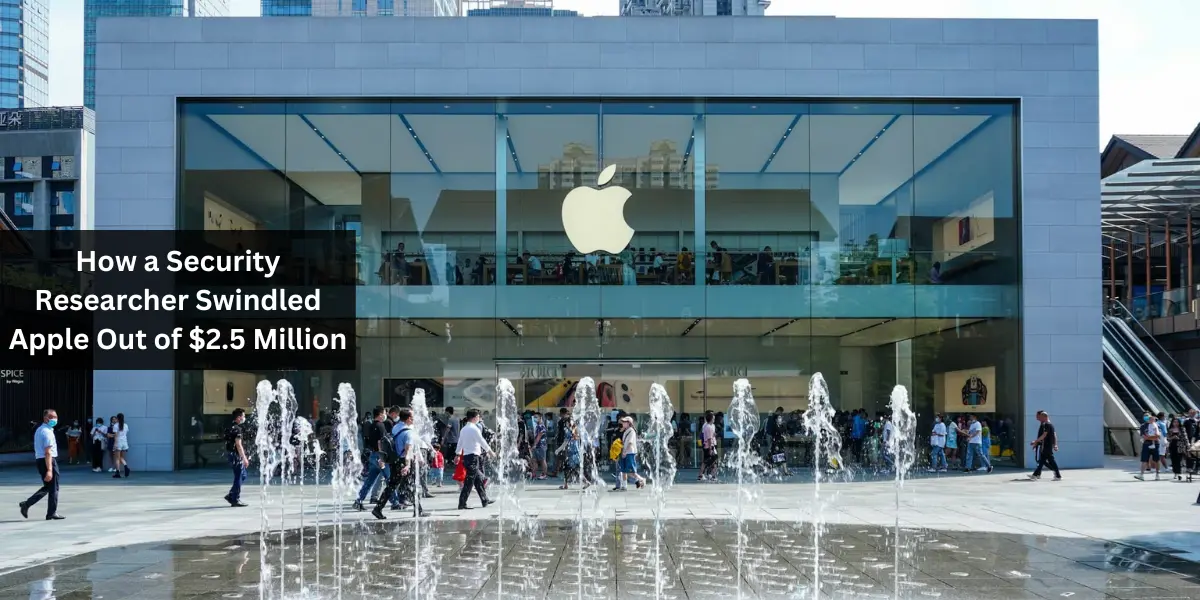In a tale that seems straight out of a cyber-thriller novel, a security researcher turned rogue has pulled off a heist that has both baffled and alarmed the tech industry. This isn’t your typical bank robbery or art theft; it’s a story of brains over brawn, where knowledge of systems and a dash of deceit led to a staggering $2.5 million swindle from none other than tech giant Apple. Let’s unravel this digital caper, piece by intriguing piece.
The Plot Thickens: A Security Flaw Exploited
The Discovery That Started It All
Our story begins with a curious mind, a security researcher with a knack for finding flaws in seemingly impenetrable systems. It’s common practice for tech companies to offer bounties for uncovering vulnerabilities in their systems, a way to enhance security before malicious hackers can exploit them. However, this tale takes a dark turn when intentions shift from safeguarding to exploiting.
The Mastermind’s Plan: Deception in Play
Crafting a Deceptive Scheme
With a deep understanding of Apple’s bounty system, the researcher devised a plan. Instead of reporting vulnerabilities directly, they exploited them. The plan was simple yet audacious: create fake claims of security flaws, complete with evidence manipulated to pass initial scrutiny. It was a game of cat and mouse, with Apple as the unsuspecting prey.
The Execution: A Flawless Operation
The Swindle in Action
Over several months, the researcher submitted numerous reports to Apple, each detailing a supposed critical security flaw. With expertly crafted evidence and a reputation as a credible researcher, the claims were taken at face value. Apple, keen on maintaining its ironclad security reputation, paid out bounties that collectively amounted to $2.5 million.
The Unraveling: Truth Comes to Light
The Scheme Crumbles
However, like all tales of deceit, the truth eventually surfaced. Anomalies in the reports caught the eye of Apple’s security team, prompting a deeper investigation. What they uncovered was not just a single fabricated claim but an entire web of deceit intricately woven to exploit the bounty system.
The Fallout: Repercussions of the Swindle
Apple’s Response and Industry Shockwaves
The revelation sent shockwaves through the tech industry, raising questions about the efficacy of bounty programs and the trust placed in independent researchers. Apple, feeling both betrayed and exploited, took immediate action, not just to recover the lost funds but to overhaul its vulnerability reporting process to prevent future incidents.
The Ethical Debate: A Line Crossed
Reflections on Security and Morality
This incident has sparked a heated debate within the cybersecurity community. While the ingenuity of the researcher is undeniable, it’s overshadowed by the ethical breach. The fine line between hacking for security and hacking for personal gain has never been more blurred.
Legal Implications: A Crime Not Unpunished
The Long Arm of the Law
In the digital age, cybercrimes carry significant legal ramifications. The researcher now faces charges of fraud and breach of trust, with potential consequences that could include hefty fines and prison time. It’s a stark reminder that in the quest for security, legality cannot be overlooked.
Security Programs on Notice: A Wake-Up Call
Reevaluating Bounty Systems
Apple’s ordeal serves as a wake-up call to all tech companies with similar bounty programs. The balance between encouraging external security research and safeguarding against exploitation is delicate and requires constant vigilance.
The Moral of the Story: Integrity in Security
Lessons Learned the Hard Way
At the heart of this saga is a lesson in integrity. Security research is vital in the digital era, but it demands honesty and ethical conduct. The breach of trust not only affects the immediate parties but also casts a shadow over the collective effort to safeguard the digital frontier.
Conclusion: A Cautionary Tale
This story of how a security researcher swindled Apple out of $2.5 million is more than just a cautionary tale; it’s a reflection on the complexities of digital security in today’s world. As we move forward, let this serve as a reminder of the importance of ethics, the vigilance required in security practices, and the consequences when those principles are ignored.
FAQs: Unpacking the Digital Heist
Q1: How did the researcher manage to deceive Apple?
A1: By exploiting vulnerabilities and crafting false reports with manipulated evidence, convincing Apple of non-existent security flaws.
Q2: What will happen to the researcher now?
A2: The researcher faces legal action for fraud and breach of trust, with potential fines and imprisonment.
Q3: Has Apple changed its bounty program since the incident?
A3: Yes, Apple has overhauled its vulnerability reporting process to prevent future frauds.
Q4: Can bounty programs still be trusted?
A4: While this incident raises concerns, bounty programs remain a vital part of cybersecurity efforts. Increased scrutiny and verification processes can help mitigate risks.
Q5: What’s the biggest takeaway from this incident?
A5: The importance of ethical conduct in security research cannot be overstated. Integrity is the foundation upon which the security of the digital world rests.

